Parsec is a revolutionary technology that allows users to stream games from their own computers to any device, anywhere in the world. With Parsec, you can play your favorite games on a laptop, tablet, or even a smartphone without any loss in performance or graphics quality.
Parsec works by leveraging the power of cloud computing and advanced video encoding algorithms. It captures the video output of your game in real-time and streams it to your remote device over the internet. The device then decodes the video and sends back your input to your computer, allowing you to control the game from anywhere.
One of the key advantages of Parsec is its low latency. Thanks to its innovative technology, Parsec can achieve extremely low latency, resulting in a near-instant response time. This means that you can play even the most fast-paced games without any noticeable delay.
Another great feature of Parsec is its multi-platform support. It is compatible with Windows, Mac, Linux, and even Raspberry Pi. This means that you can use Parsec to stream games from any of these platforms to any other supported device.
Whether you’re a casual gamer or a hardcore enthusiast, Parsec is a game-changer. It eliminates the need for expensive gaming hardware and allows you to play your favorite games anywhere, anytime. Try Parsec today and see for yourself!


The concept of the parsec was introduced to many of us through the animated series “The Mystery of the Third Planet”, where courageous astronauts effortlessly traveled vast distances in outer space.
However, not everyone is familiar with the true meaning of this term. So, what exactly is a parsec and how far did the characters in the cartoon have to journey?
What is the definition of the term “parsec”?
The word “parsec” is a contraction of the words “parallax” and “second.” The term “second” in this context does not refer to a unit of time, but rather a unit of measurement for plane angles, specifically angular (or arc) seconds.
Parallax is a metric used to determine the change in position of an object in space relative to the observer. In astronomy, different types of parallax are distinguished, including diurnal, annual, and centennial parallax.
When it comes to daily parallax, the calculation involves determining the difference in the direction to the celestial body from a specific point on Earth and from the center of mass of the planet. Annual parallax, on the other hand, takes into consideration the Earth’s rotation around the Sun, while century parallax allows for determining the difference relative to the observer, taking into account the observed object’s proper motions within the galaxy.
What exactly is a parsec?

A parsec is a unit of measurement used to determine the distance between celestial bodies outside of our solar system. The parsec is commonly used for measurements within our own galaxy, the Milky Way. For larger distances in the universe, multiple parsecs are used, such as kiloparsec (1000 parsecs), megaparsec (1 million parsecs), and gigaparsec (1 billion parsecs).
Not only does the parsec serve a practical purpose in astronomy, but it also provides convenience for astronomers. Instead of stating that the distance from the Sun to a star is 46.27 trillion kilometers, it is much simpler to say that it is 1.5 parsecs.
Who was responsible for the invention of the parsec?
In 1838, the German astronomer Friedrich Wilhelm Bessel became the first person to successfully measure distances to cosmic objects. In a groundbreaking achievement, he was able to calculate the annual parallax for the star 61 Swan with unprecedented accuracy, marking a significant milestone in the field of astronomy.


The scientist utilized a time-honored technique in astronomy, wherein the disparity in angles subsequent to two measurements was documented in order to determine the distance to the star.
Initially, measurements were taken when the Earth was positioned on one side of the Sun, and subsequently, the same parameters were measured six months later, when the Earth had rotated to the opposite side of the Sun. The term “parsec” itself was coined by the British astronomer Herbert Hall Turner in 1913.
The annual parallax is utilized for determining the parsec, which is a unit of distance used in astronomy. Astronomers create an imaginary right triangle to calculate the distance to an object, with the hypotenuse representing the distance from the celestial body to the Sun, and the cathetus representing the semi-major axis of the Earth’s orbit. The acute angle in this triangle is known as the annual parallax. A parsec is then defined as the distance to a star that has a parallax of 1 arc second.
Aside from parsecs, kilometers and light-years are also used to measure the distance between cosmic objects. The conversion ratio between these units has been long established: 1 parsec is equivalent to 3.2616 light-years or 30.8568 trillion kilometers. In Russian, the symbol “pk” is used to designate a parsec, while in English, it is represented by “rs”.
Examples of Space Distances Illustrated

Ever since parsecs were introduced, astronomers have had the ability to calculate distances to numerous celestial bodies within the Milky Way and the wider Universe. For example, the distance from the Sun to the closest star, Proxima Centauri, is equivalent to 1.3 parsecs. The distance from the Sun to the center of our galaxy is approximately 8 kiloparsecs, while the distance to the Andromeda Nebula is equivalent to 0.77 megaparsecs.
The total diameter of the Milky Way is estimated to be around 30 kiloparsecs, and the distance from our planet to the farthest observed edge of the Universe is approximately 4 gigaparsecs.
What is the definition of the term “parsec”?
The term “parsec” is a shortened form of the words “parallax” and “second”. The meaning of “second” in this context does not refer to a unit of time, but rather a unit of measurement for plane angles, specifically angular (or arc) seconds. Parallax is a measurement used to determine the change in position of a celestial object relative to the observer. In the field of astronomy, different types of parallax are distinguished, including diurnal, annual, and centennial parallax. Diurnal parallax calculates the difference in the direction to the celestial body from a specific point on Earth and from the center of the Earth. Annual parallax takes into account the Earth’s rotation around the Sun, while centennial parallax allows for determination of the difference relative to the observer, taking into account the observed object’s own movements within the galaxy.
Methods of investigating distances in the Universe
- Standard candles
- Measuring rods
- Hubble’s Law.
- And approximately 30 other…
Parallax
In the field of astronomy, parallax is defined as the phenomenon of an apparent shift in the position of an object on the celestial sphere in relation to other objects, resulting from a change in the observer’s observation location caused by their displacement.
Parallax is an apparent change in the position of an object due to the observer’s movement, that is, a change in the object’s position.
The concept of parallax is applicable in various systems:
- Diurnal parallax (geocentric equatorial parallax), which is associated with the Earth’s rotation
- Meridional geocentric parallax, which is related to the change in the observer’s latitude
- The annual parallax, also known as heliocentric parallax, is connected to the Earth’s rotation around the Sun.
Precise Explanation of a Parsec
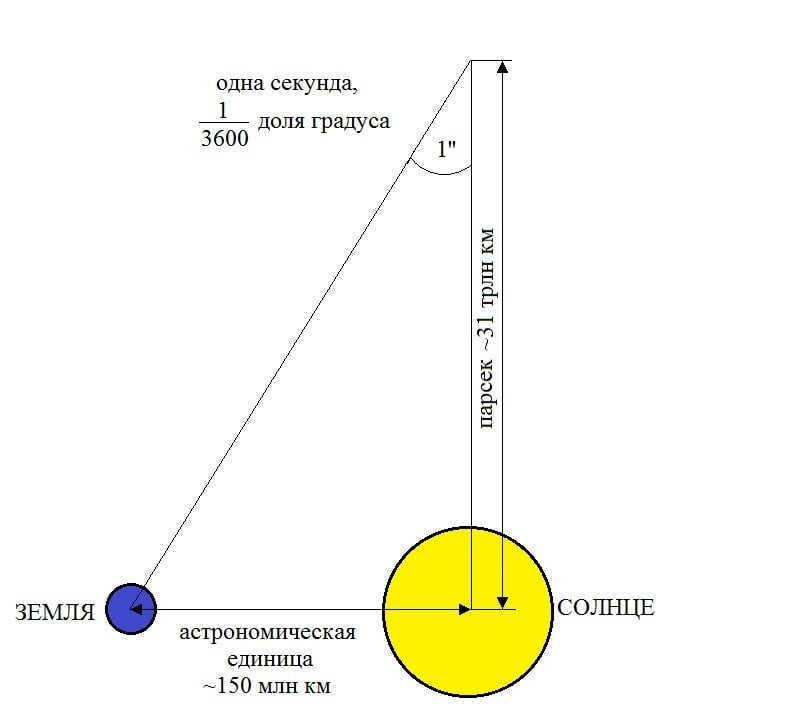
If the parallax angle remains constant, one can calculate the distances to a star by applying trigonometric principles (given the known distance from the Earth to the Sun). In 1913, Turner introduced the term “parsec” to represent the distance from the Sun to a star with a parallax angle of 1 arc second.
This term was coined by combining the terms parallax and second. The idea of parallax is associated with the Earth’s rotation (diurnal parallax), the change in latitude of the observer (geocentric meridian parallax), or the Earth’s orbital motion around the Sun (annual parallax). The definition states that 1 parsec (pc) is the distance from which half of the major axis of the Earth’s orbit can be seen as an arc measuring 1 second. This distance is the reciprocal of the heliocentric parallax of the object. Parsec is now abbreviated as pc, previously as ps. The abbreviation ps is no longer used today because it is the same as the abbreviation for picosecond.
Light Year (LY)
Light has the ability to move at a limited pace, specifically 299,792,458 meters per second. As a result, it covers a distance of roughly 300,000 kilometers every second. By multiplying this distance by the total number of days in a year (365 days), it can be determined that light travels a distance of 946,800,000,000,000,000 kilometers in the span of a year. This particular measurement has been designated as 1 light-year.
One Astronomical unit (AU) is defined as the average distance between the Earth and the Sun. It is approximately 149.6 million kilometers or 149,597,870,700 meters. The International Astronomical Union established this constant value in Beijing in 2012.
Distances in the universe
- 1 kilometer is equal to approximately 0.00000000000000006684587 AU.
- 1 light-year is equivalent to 63241 AU.
- 1 parsec is approximately 206265 AU.
- The distance from the Earth to the Sun is 1 AU.
- Mercury’s distance from the Sun is approximately 0.39 AU.
- The distance from the Sun to Venus is about 0.72 AU.
- Mars is located at a distance of approximately 1.52 AU from the Sun.
- Jupiter is located at a distance of approximately 5.2 AU from the Sun.
- Saturn is located at a distance of approximately 9.58 AU from the Sun.
- Uranus is located at a distance of approximately 19.23 AU from the Sun.
- Neptune is located at a distance of approximately 30.1 AU from the Sun.
- The distance from the center of the Milky Way to the Sun is approximately 1,700,000 astronomical units.
- Mercury is located approximately 0.000006121 light-years away from the Sun.
- Venus is located approximately 0.000011437 light-years away from the Sun.
- Mars is located approximately 0.000024094 light-years away from the Sun.
- Jupiter is located approximately 0.000082279 light-years away from the Sun.
- Saturn is located approximately 0.000150806 light-years away from the Sun.
- Uranus is located approximately 0.000303463 light-years away from the Sun.
- Neptune is located approximately 0.000475467 light-years away from the Sun.
It is also the standard unit for measuring distances in the universe. However, understanding the concept of time in space is much more complex and controversial. A light-year represents the distance that light travels in a vacuum over the course of a Julian year (365.25 days and 31,557,600 seconds). 1 light year = 63241 Astronomical Units = 0.3066 parsecs = 9.4607 x 10^15 meters ≈ 9.4 trillion kilometers. The time it takes for light to travel from the Sun to the Earth is 8 minutes and 20 seconds. Light can travel from the Moon to the Earth in just 1.3 seconds. This fact, among others, was the cause of communication delays during the Apollo manned mission. The diameter of the Milky Way is approximately 100,000 light years.
Astronomers have a unique sense of humor. Otherwise, how else can we explain these peculiar units of measurement that often confuse unsuspecting individuals? Light-years, parsecs, astronomical units. What exactly do they mean?
Hello everyone, I am Valentin Anatolievich, and today we will explore the concept of measuring space.
Measuring Distance with Angles
Astronomers utilize angular measurements to determine the distances between stars in the night sky. They draw straight lines from the observer to the stars or planets in the celestial sphere, and the angle formed by these lines represents the angular distance.
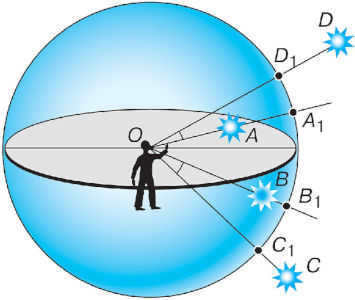

It can be easily understood by using your own hand. For example, the width of the little finger on your outstretched hand corresponds to approximately one degree. The width of your thumb corresponds to two degrees. A closed fist represents 10 degrees, and two fists represent 20 degrees.

However, when it comes to measuring distances between stars on the celestial sphere, using fingers is not sufficient. Therefore, three primary units of distance measurement have been introduced: the light year, the parsec, and the astronomical unit.
Astronomical unit
On the scale of the solar system, kilometers and meters are still applicable, but it is more convenient to utilize astronomical units.
An astronomical unit (a.u.) represents the average distance between the Earth and the Sun, or the size of the semi-major axis of its orbit. This equates to 149,597,870,700 meters.
Saturn and Earth are coming as close as a minimum of eight astronomical units. You can convert this distance into kilometers and determine how many times you would need to service your car’s engine to cover such a distance.
While the astronomical unit is a significant measure on Earth, it becomes relatively small when measuring distances beyond the solar system. So, let’s continue.
Light year
A light year (abbreviated ly) is the distance that light travels in one year, which is approximately 9.461 trillion kilometers or 5.878 trillion miles. To put this into perspective, let’s multiply this by the speed of light in a vacuum, which is approximately 299,792,458 meters per second. This means that one light year is equal to about 9.461 trillion kilometers or 5.878 trillion miles.
Parsec and annual parallax
Another mysterious unit in astronomy is the parsec (abbreviated pc), which is more than three times the size of a light year. To put it into perspective, one parsec is equal to about 30.857 trillion kilometers or 19.173 trillion miles.
You can leave a comment below to let us know how many meters are in one parsec.
The word parsec itself is a combination of two words, parallax and arcsecond. It is defined as the distance to an object that would have an annual parallax of one arcsecond. To understand what we mean by parallax, let’s first define what parallax is.
Parallax is the term used to describe the change in position of an object relative to the distant background when viewed from different angles.
As the observer moves, objects that are farther away will change their relative position at a slower rate, resulting in a smaller parallax.
By utilizing trigonometry and knowing the distance between observation points, as well as the angle of displacement, we can accurately determine the distance to the object in question.

The Earth orbits around the Sun throughout the year, causing a change in the observation point and resulting in the appearance of annual parallax in the stars.
The magnitude of the annual parallax for any given star is equivalent to the angle at which the Earth’s orbit’s major semi-axis is visible from that star. As mentioned before, this major semi-axis is equal to one astronomical unit.
So, what exactly is a parsec? Let’s imagine being situated one parsec away from the Sun. In this scenario, the angular distance between the Earth and the Sun would be equivalent to one second. In layman’s terms, this value is incredibly small, approximately 1/3600. Thus, indicating that one parsec is an extensive distance.

Why do we need astronomy?
One might wonder why we should bother with astronomy and all its complex measurements like astronomical units, parsecs, and light years.
Here’s a little piece of advice for you. If you ever find yourself facing a problem, try expressing your height in terms of light-years. Then divide that by the diameter of our galaxy, which happens to be approximately 100,000 light years.
Take a look at the resulting number and realize just how minuscule you are in the grand scale of the galaxy. Suddenly, your problems may not seem so significant anymore.
So, my friends, embrace this knowledge and find happiness. Until we meet again.


If you are a fan of science fiction movies or animated series, you might have come across the term “parsec”. A lot of people are curious about the meaning of parsec in the context of astronomy. This article aims to provide a comprehensive explanation.
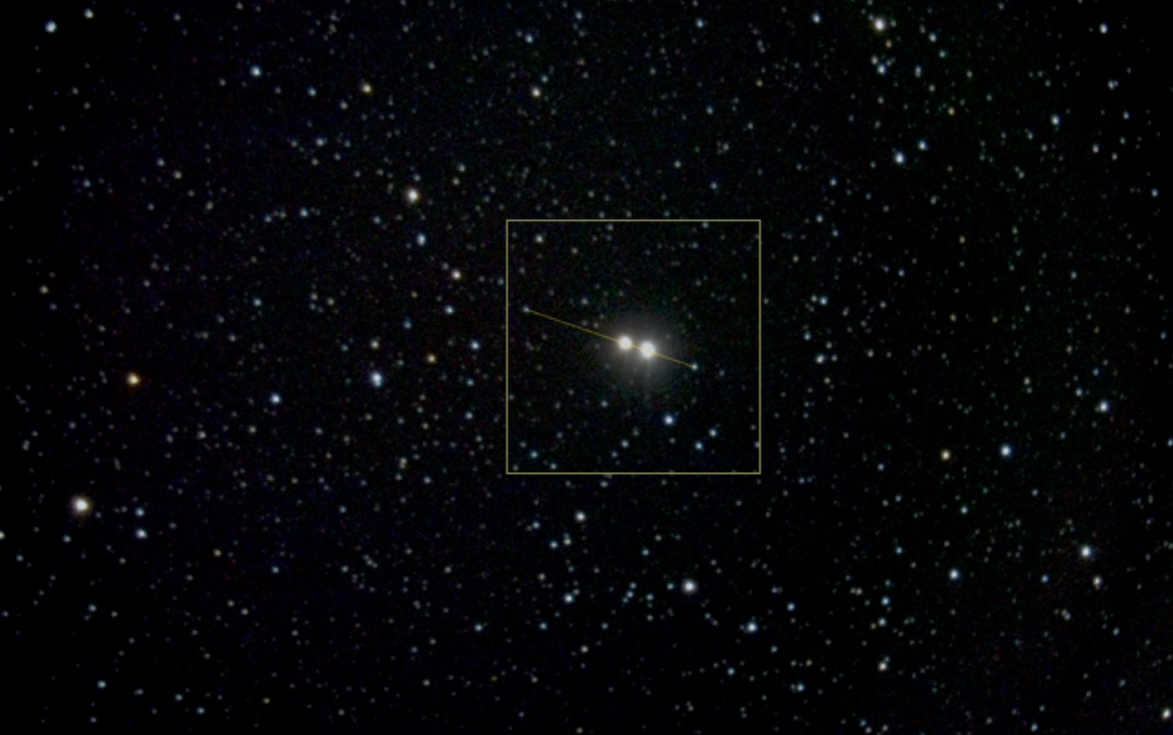

Explanation of the term “parsec”
The term “parsec” is a combination of two words, parallax and second. The word “second” in this context does not refer to a unit of time that is commonly known to people.

In this case, a second would serve as a measurement parameter for plane angles.
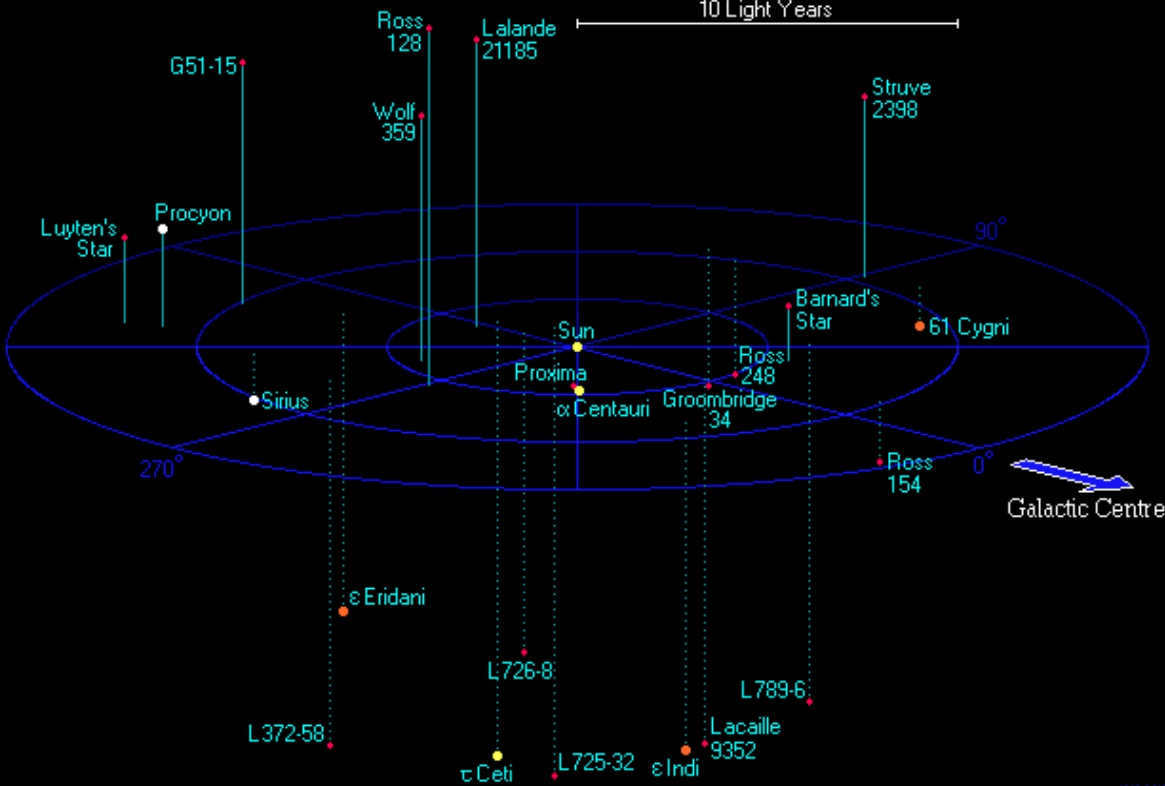
Parallax is a term referring to a specific duration of time. It serves as a metric that enables us to ascertain the extent to which the position of an entity in the universe has shifted in comparison to the observer.
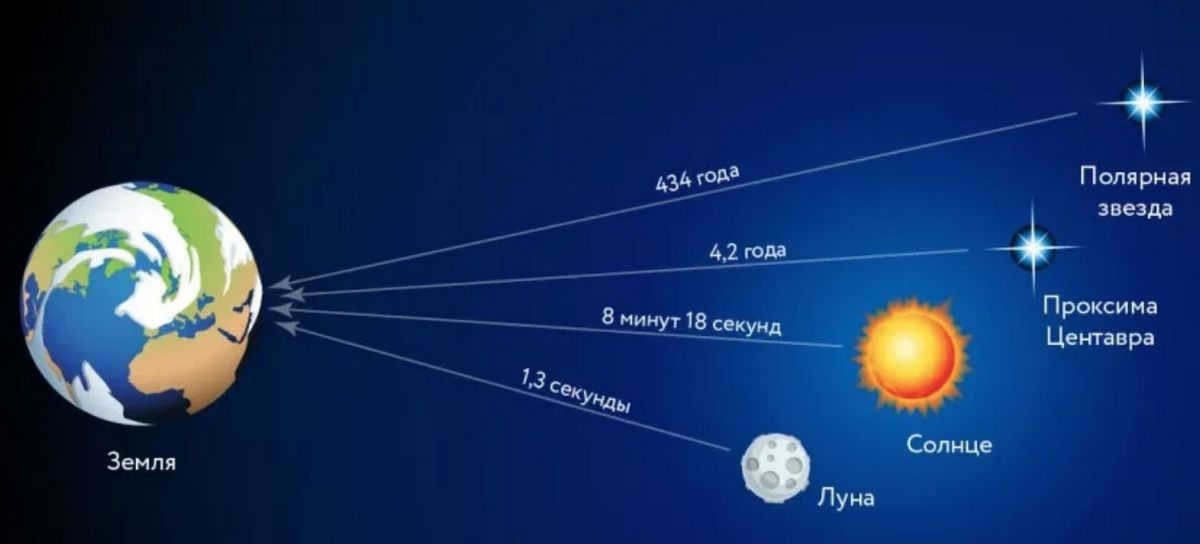
The classification of space parallax is based on the durations of days, years, and centuries.
When calculating the daily parallax, the discrepancy between the direction of a celestial object from a specific location and the Earth’s center of mass is considered.

The yearly index is calculated using the identical principle, however, it also factors in the planet’s revolution around the Sun.

The disparity of a century parallax is determined by the variation in perspective for the viewer, considering the movements of the observed object within the galaxy.
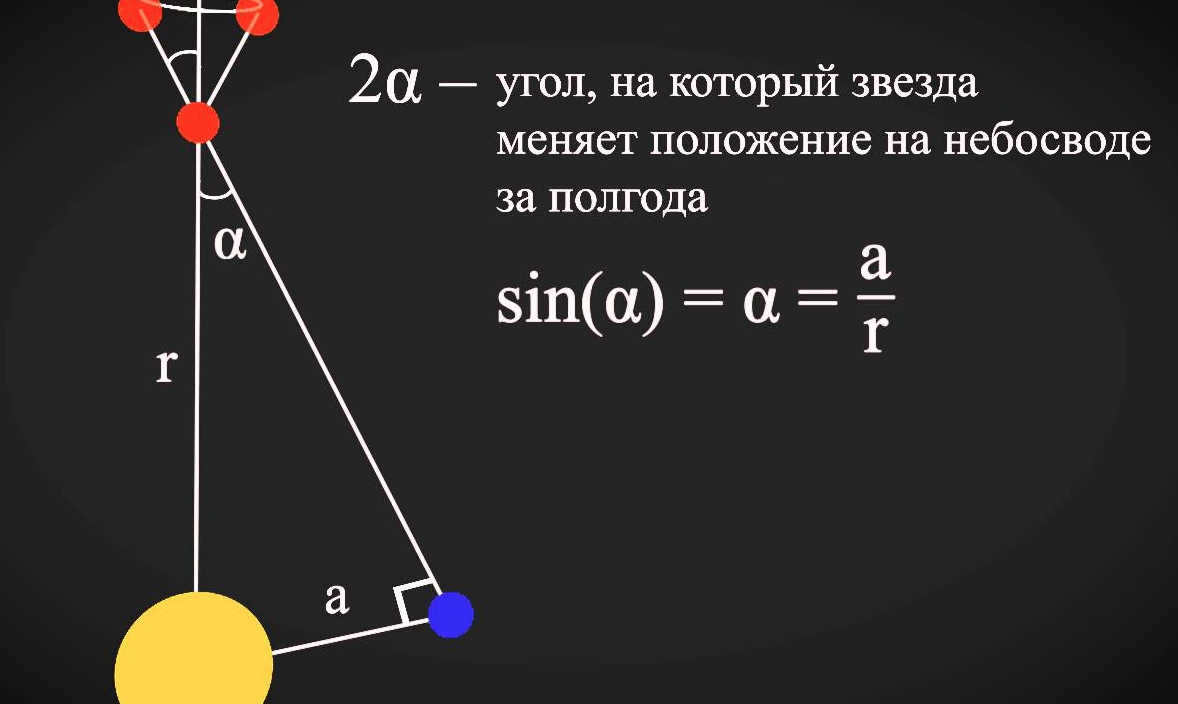

Understanding the Concept of a Parsec
To put it simply, a parsec is a unit of measurement used to determine the distance between celestial bodies, as long as they are located outside the boundaries of our solar system.

The aforementioned value is utilized for taking measurements within our galaxy, the Milky Way.
On a global scale, multiples of parsecs are employed to establish distances.


The parsec can be measured in kiloparsecs (1 parsec cubed), megaparsecs (to the power of six), and gigaparsecs (to the power of nine).


Parsec is an incredibly useful measurement that simplifies the tasks of astronomers.
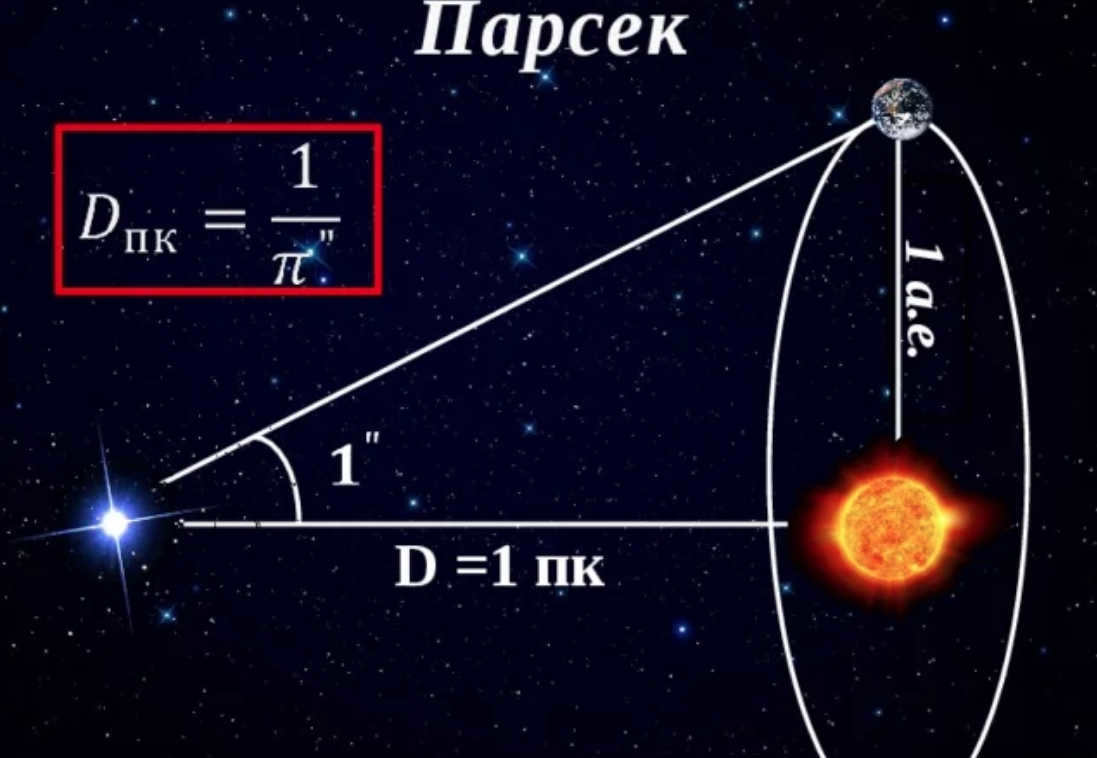
It’s a lot simpler to articulate that the Sun-to-star distance is 1.5 parsecs rather than 46.27 million kilometers.
The discovery of the parsec
In 1838, F. W. Bessel, an astronomer from Germany, embarked on a groundbreaking study to measure the distances between celestial objects. This marked the first-ever attempt to explore the vast expanses of space in such detail.

After extensive research, he was able to calculate the yearly parallax of the 61 Swan star.
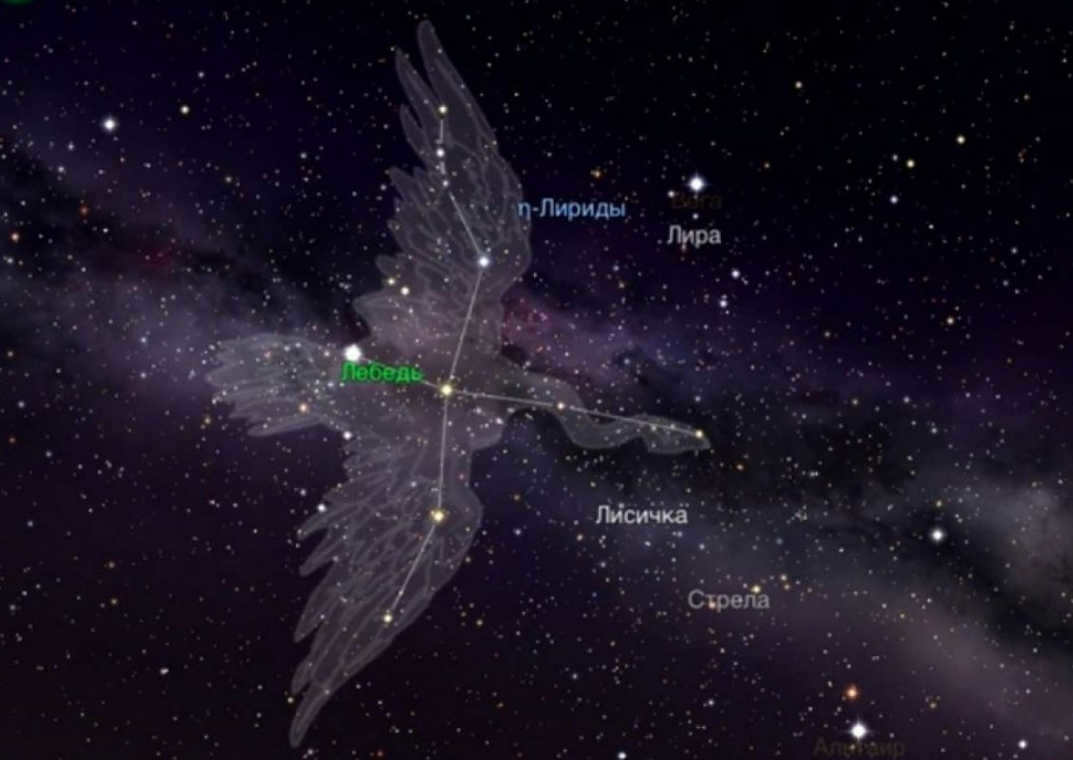
While performing their calculations, the scientist utilized a widely recognized and ancient astronomical technique, which allowed for the estimation of the distance to the star based on the variance in angles.
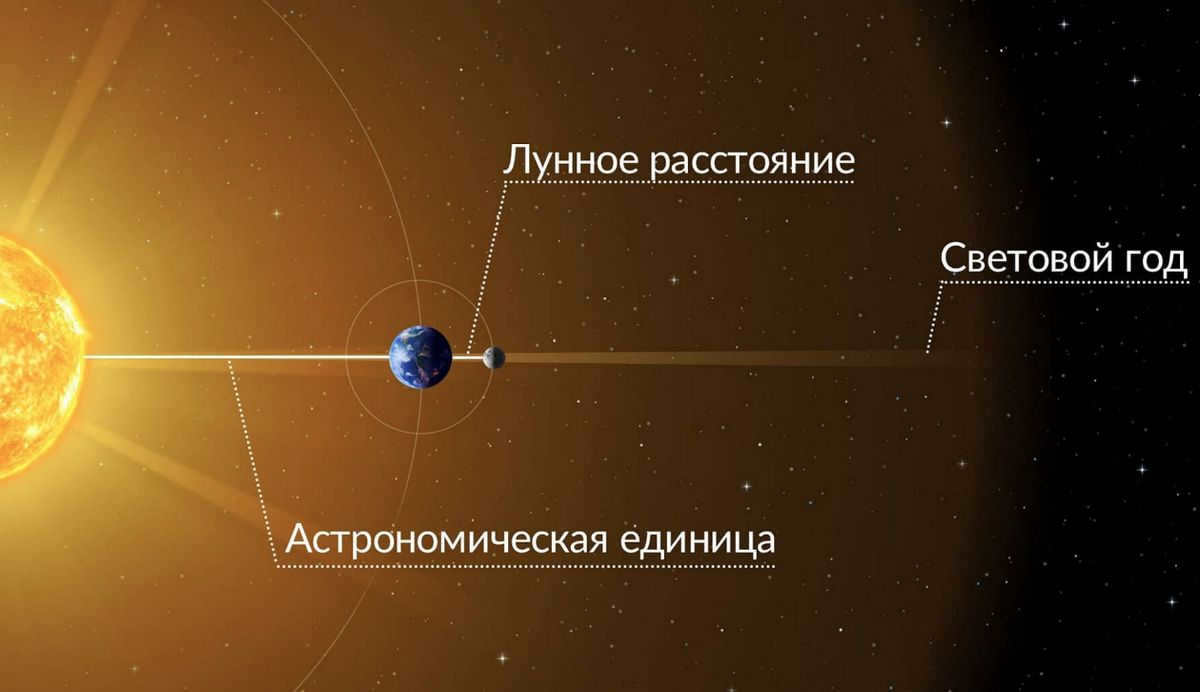
In order to accomplish this, two examinations and evaluations must be conducted.
Initially, the parameters were assessed while the Earth was oriented towards the Sun from one direction.

After a span of 6 months, the subsequent evaluations were conducted, during which the celestial body was oriented towards the Sun, exposing its opposite side.

G. H. Turner, a British astronomer, is credited with coining the term “parsec” in the early 20th century.


How much is equal to a parsec
So, what is equivalent to 1 parsec, what is its value in kilometers? The calculation of a parsec is based on the measurement of parallax in years.
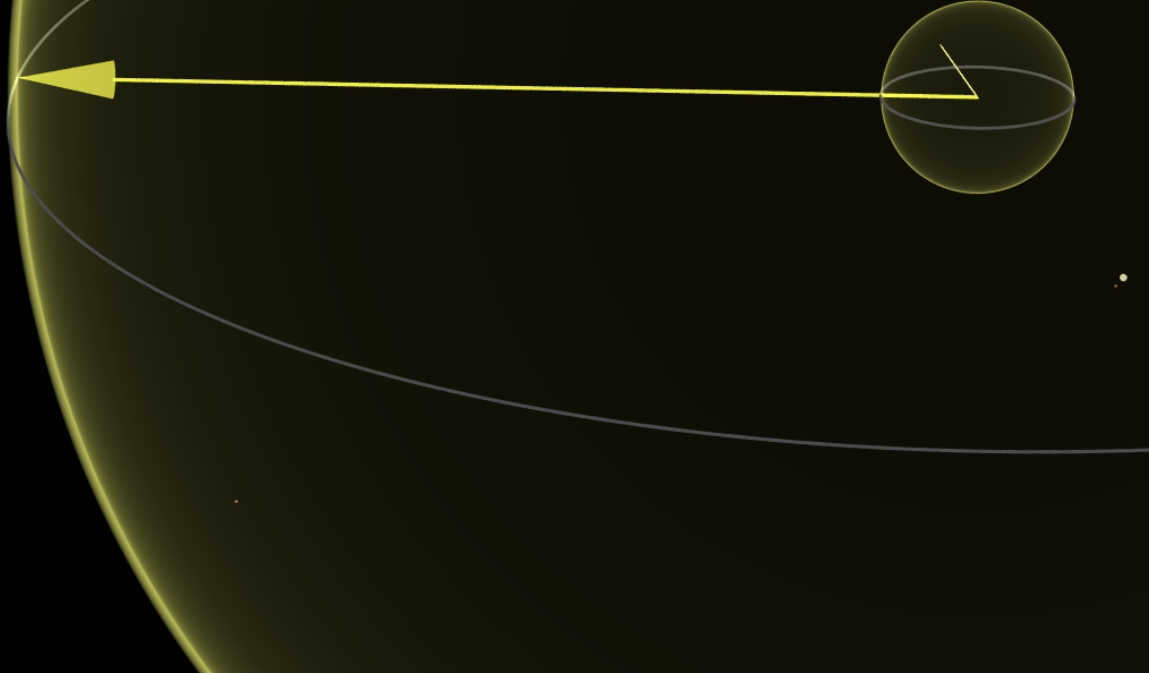
In order to calculate the distance to an object, it is necessary to create a fictional right-angled triangle.
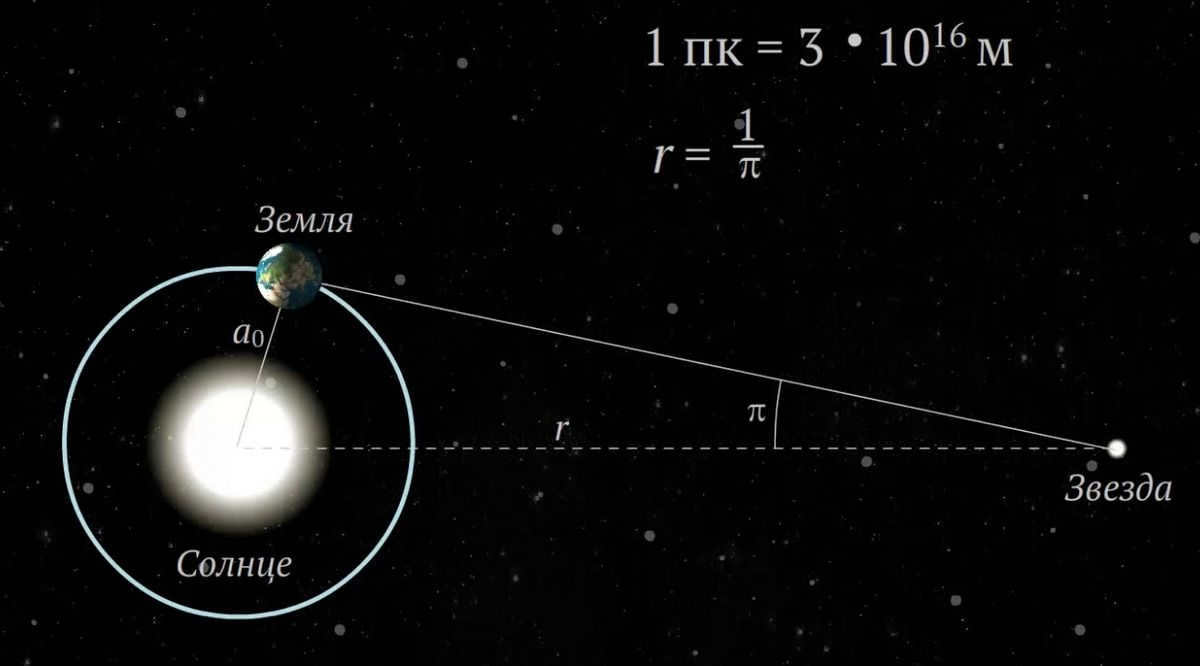
The hypotenuse is a measurement that represents the distance from the body being observed to the Sun.

The semi-major axis of the Earth’s orbit should be indicated by the cathetus.
The annual parallax is the parameter that determines the magnitude of the acute angle of the depicted figure.
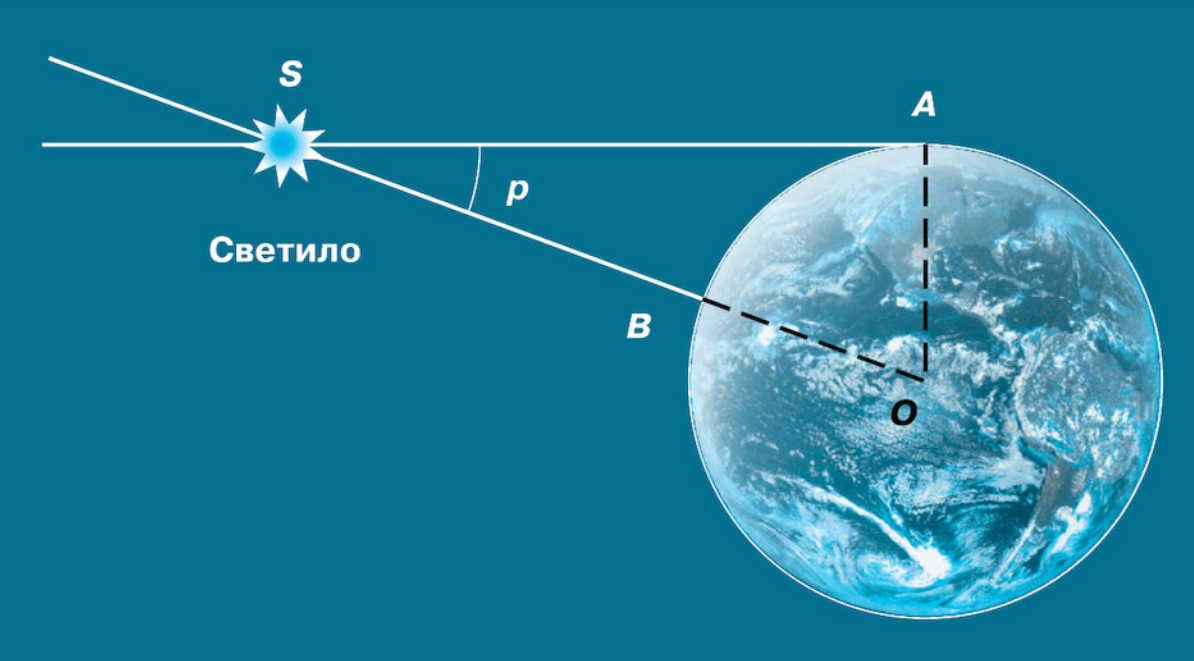

The parsec serves as a measure of the distance between you and the star. The parallax measurement should be approximately equal to one angular second.

When it comes to measuring the distance between objects in space, parsecs are not the only unit of measurement used. It is crucial to consider kilometers and light years as well.

Scientists have successfully determined the precise measurement of the unit in question. It has been calculated that each parsec is equivalent to 3.2616 light-years, or 30.8569 trillion kilometers.
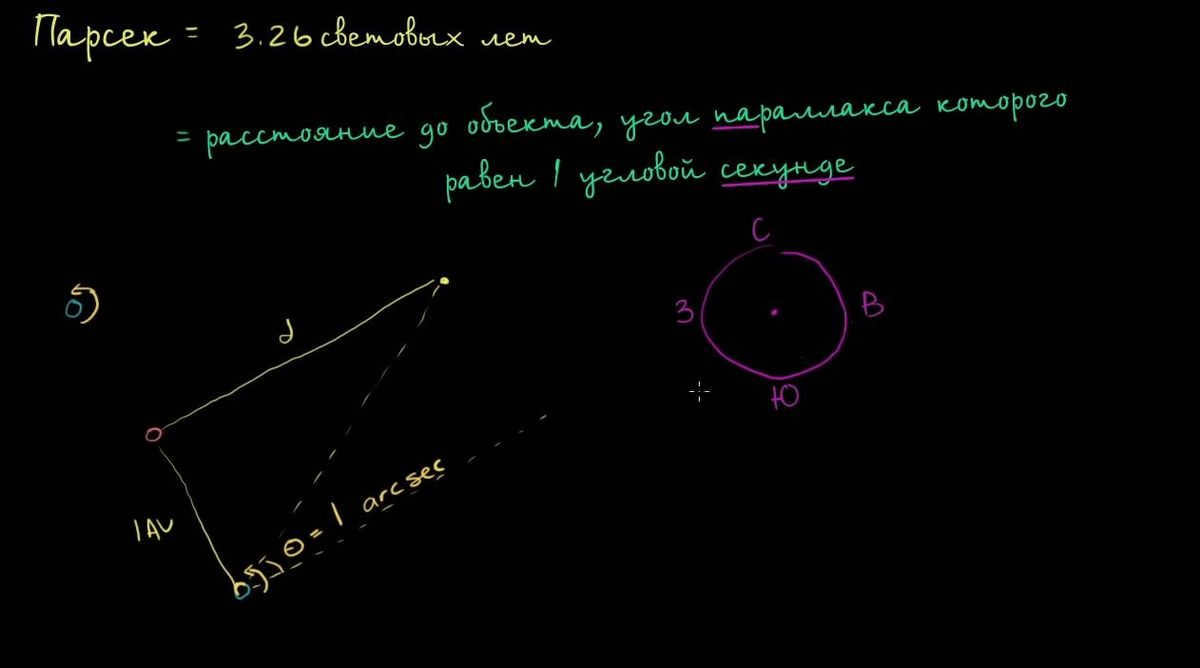

The notation for a parsec can be represented by these characters:
Illustrations of celestial distances
Ever since parsecs came into existence, scientists have had the capacity to compute distances to a multitude of celestial entities, encompassing not just those within the confines of the Milky Way, but also those spanning the vast expanse of the entire cosmos.
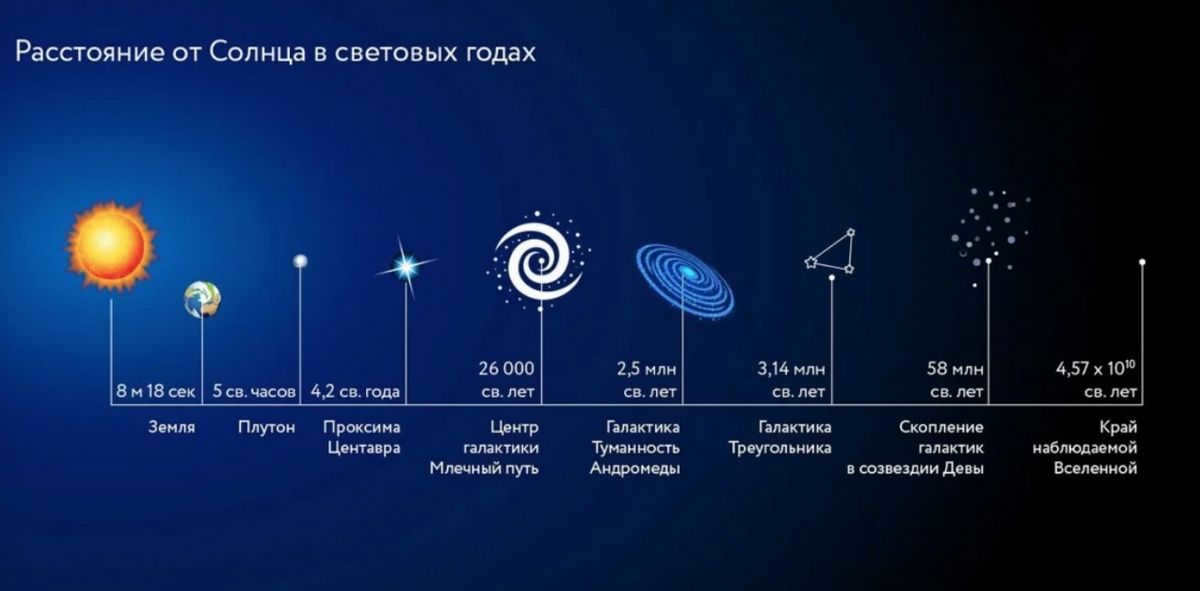

It is common knowledge that Proxima Centauri is the star nearest to Earth. Situated 1.3 parsecs away from the Sun, it is also positioned 8 kiloparsecs from the center of the galaxy.

The measurement between Proxima Centauri and the Andromeda Nebula is equivalent to 0.77 megaparsecs.
In terms of scale, the Milky Way spans approximately 30 kiloparsecs. The observable Universe, extending from Earth to its farthest visible point in the night sky, covers a distance of approximately 4 gigaparsecs.

The parsec is an extremely convenient unit of measurement, as you can observe. It is valuable to have knowledge of the equivalent values of a parsec in kilometers and light years.


This simplifies the process of determining the distances between any celestial objects present in outer space.
It is frequently employed in the computation of the distances between objects within the Milky Way galaxy.
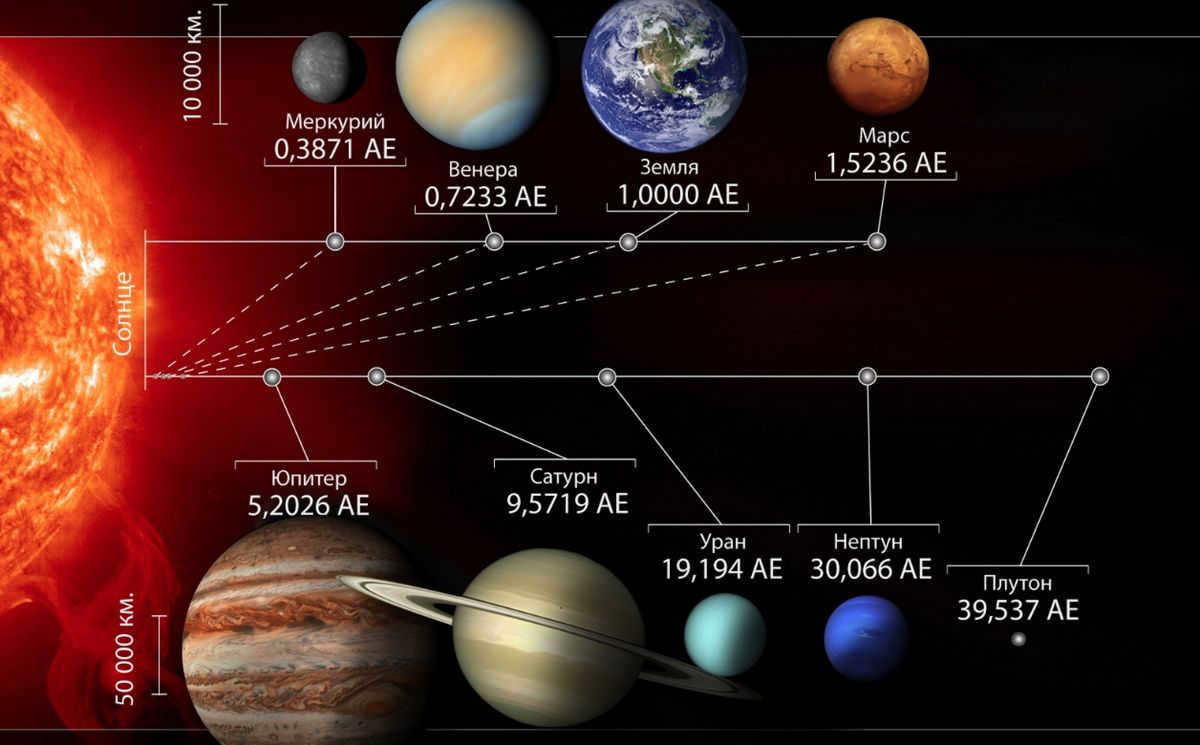
Considering the ever-changing nature of technology, it won’t be long before researchers have the capability to examine and compute the spatial gaps separating various universes.
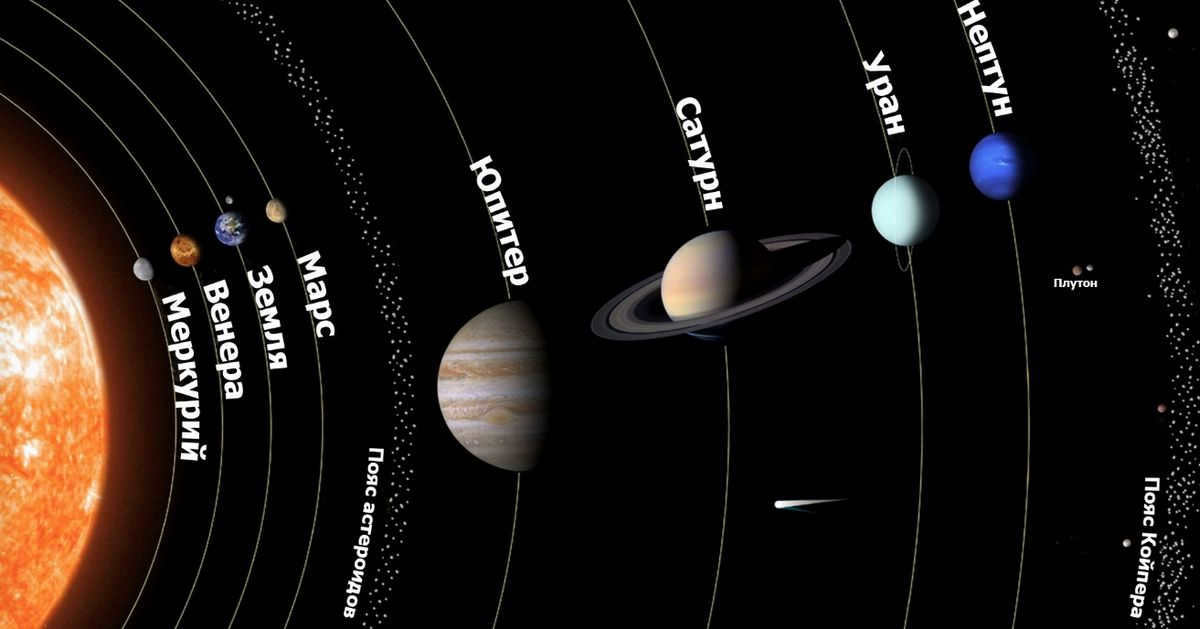
The drawback of the parsec lies in its requirement for expertise, limiting its use to experienced astronomers. Everyday individuals may struggle with the complexities involved in calculations.
The article incorporates images sourced from planetarium-moscow.ru
Here are a few concepts that will enhance your understanding of astronomy.
Apparent Magnitude of Stars
Contrary to popular belief, the number of stars visible to the naked eye in the night sky is not as vast as it may appear. However, if one possesses exceptional visual acuity and ventures outside of urban areas, away from the glaring lights of the city, there are approximately 6000 stars that can be observed. Unfortunately, half of these stars will always remain hidden from view, obscured by the horizon. Nevertheless, even with this limited number, it is still possible to discern the varying degrees of brightness among the stars. This phenomenon was also recognized by ancient scholars. Hipparchus, an esteemed mathematician and astronomer from ancient Greece who lived during the 2nd century BC, classified the stars he observed into six different magnitudes. The brightest stars were categorized as first magnitude, while the faintest stars were designated as sixth magnitude.
As stated above, the brightest objects will have a negative apparent stellar magnitude. For comparison, the Sun has a stellar magnitude of -26.7, while Proxima Centauri, the closest star to our Sun but not visible to the naked eye, has a stellar magnitude of +11.1. The maximum stellar magnitude of Mars is approximately 2.91. The satellite “Mayak”, which is being developed by young Russian scientists and planned to be launched into orbit, is expected to have a stellar magnitude of no more than -10. If all goes well, it will temporarily become the brightest object in the night sky, except for the Moon at full moon (-12.74).
Astounding magnitude of a star
Deneb, one of the most immense stars known to the scientific community, possesses a stellar magnitude of +1.25. Its size is roughly equivalent to the diameter of Earth’s orbit and is 110 times larger than the Sun’s diameter. The colossal star is located 1,640 light years away, although there is still debate among scientists regarding its exact distance. Typically, stars at this distance can only be observed through a telescope. If we were in closer proximity to Deneb, its brightness in the sky would be significantly greater. Consequently, the apparent stellar magnitude relies on both the object’s luminosity and its distance. To facilitate comparisons between the luminosities of different stars, the absolute stellar magnitude is employed. For stars, this value represents the apparent stellar magnitude the object would have if it were positioned 10 parsecs away from the observer. With knowledge of the star’s distance, calculating the absolute stellar magnitude becomes a relatively straightforward task.
Parallax
Parallax is a technique in web design where background images move slower than foreground images, creating a 3D effect as the user scrolls down the page. This effect adds depth and visual interest to a website, making it more engaging and immersive for the user.
Have you ever wondered how scientists determine the distance to a star? It’s not possible to measure that distance with a laser rangefinder. However, the process is actually quite straightforward. Throughout the year, the star’s position in the sky changes due to the Earth’s orbit around the Sun. This change is known as the star’s annual parallax. The closer the star is to us, the greater its displacement compared to stars that are farther away. However, even for the closest stars, this displacement is incredibly small. In fact, the inability to detect parallax in stars was once used as an argument against the heliocentric model of the solar system. It wasn’t until the 19th century that this became possible. Nowadays, special space telescopes are placed in orbit to measure parallaxes and therefore determine distances to stars. The European Space Agency’s Hipparcos telescope, named after the astronomer Hipparchus who classified stars by their brightness, has successfully measured parallaxes for over 100,000 stars. In December 2013, its successor Gaia was launched into orbit.

Parallax, which is not only limited to astronomy, refers to the shift in the perceived location of an object in relation to a background that is farther away (in this case, distant stars), depending on the observer’s position. It is also utilized in geodesy and is applicable to photography. Parallax is quantified in terms of angular seconds (arc seconds).
Light-year
Measuring distances in outer space using kilometers is not practical. For instance, the distance to our closest star, Proxima Centauri, is approximately 4.01×1013 kilometers (40.1 trillion kilometers). Visualizing this distance is challenging enough. However, if we measure this distance in light-years, which is a unit of length equal to the distance light travels in one year, we obtain 4.2 light-years. It takes about 4 years and 3 months for the light from this red dwarf to reach us. It’s a straightforward concept.
However, the other unit of measurement utilized in the field of astronomy is not as straightforward. The distance to the star Proxima Centauri, which is calculated in parsecs, amounts to 1.3 units. The term “parsec” itself is derived from the combination of the words “parallax” and “second” (which refers to an angular second equivalent to 1/3600 of a degree, as we might recall from using a protractor in school). It is this very parallax that enables us to estimate distances to stars. A parsec (abbreviated as “pk”) is defined as the distance from which a segment measuring one astronomical unit in length (representing the radius of the Earth’s orbit) and extending perpendicular to the line of sight can be observed at an angle of one arc second.
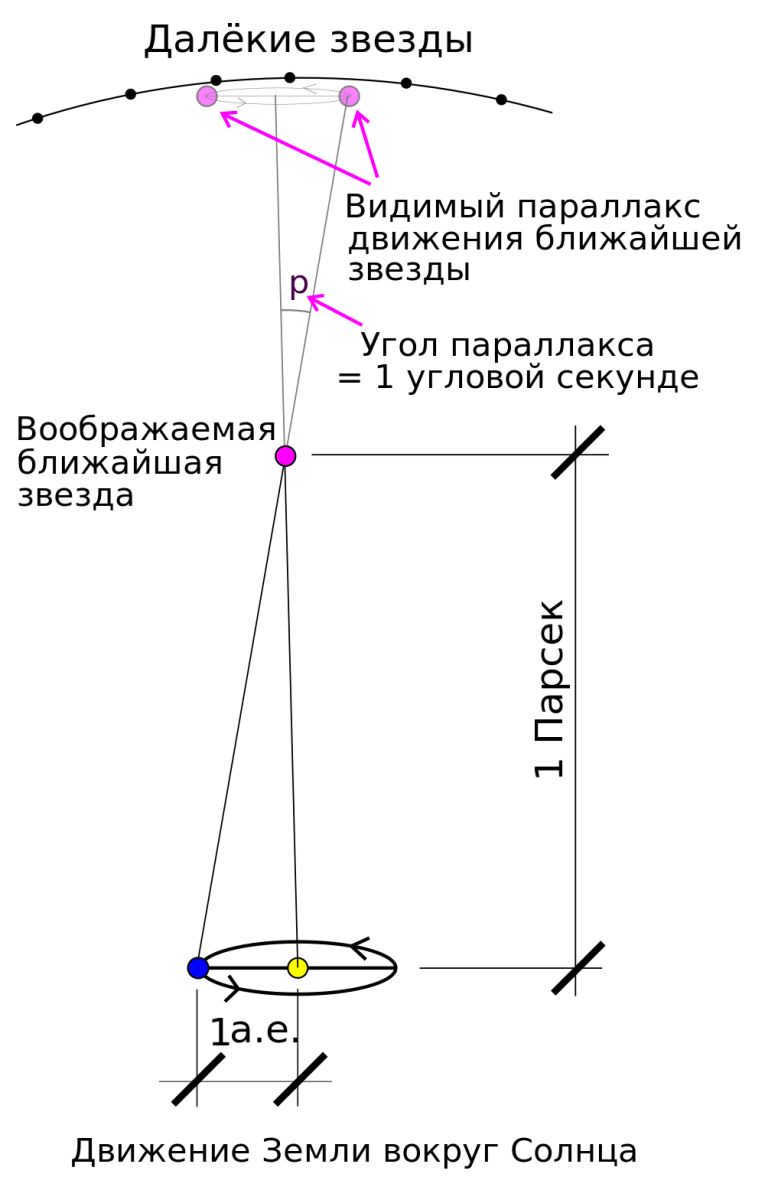
Galaxy branch
Our Milky Way has a size of 100,000 light-years across. It is part of one of the primary categories of galaxies. The Milky Way is a spiral galaxy with a connection. All the stars that we observe in the sky without the aid of a telescope are located within our Galaxy. The Milky Way is estimated to contain between 200 and 400 billion stars. So, how can we navigate and determine the position of the Sun among these billions of stars?
The Milky Way is a spiral galaxy, and it possesses spiral galaxy branches situated within the plane of its disk. A galaxy branch is a structural component of a spiral galaxy. It is within these galaxy branches that the majority of stars, dust, and gas are found.
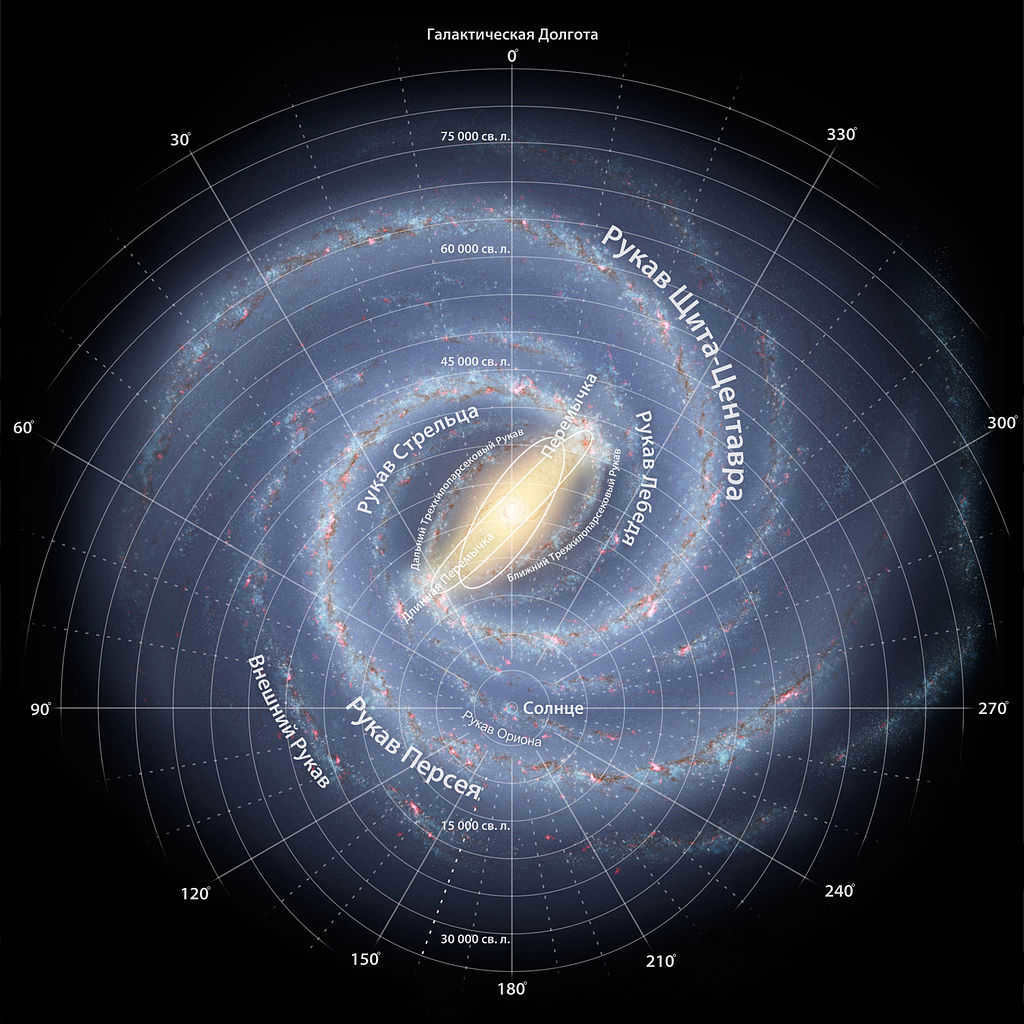
There are multiple arms in the Milky Way Galaxy, with the Sagittarius arm, the Swan arm, the Perseus arm, the Centaurus arm, and the Orion arm being the primary ones. These arms are named after the constellations where the majority of them can be observed. Out of all the arms, Orion’s arm, also known as Orion’s Spur, is relatively small, spanning only about 11,000 light years. However, what makes this particular arm significant to us is that it is home to the Sun and our small Blue Planet, where we reside.
Pericenter and Apocenter
The majority of artificial satellites and celestial bodies have elliptical orbits. In every elliptical orbit, there exists a point that is closest to the central body and a point that is farthest from it. The point closest to the central body is known as the pericenter, while the point farthest from it is referred to as the apocenter.
Astronomical unit
The perihelion of Earth’s orbit (the point closest to the Sun) is 147,098,290 km (0.983 astronomical units), while the aphelion is 152,098,232 km (1.017 astronomical units). However, by taking the average distance from Earth to the Sun, we establish a convenient unit of measurement in space. For distances where measuring in kilometers, light-years, and parsecs becomes inconvenient, the “astronomical unit” (abbreviated as “a. u.”) is used to determine distances between objects within the solar system, extrasolar systems, and among components of binary stars. After undergoing several refinements, the astronomical unit is officially recognized as 149,597,870.7 kilometers.
Therefore, the Earth is situated at a distance of 1 astronomical unit (a. u.) from the Sun, while Neptune, the most distant planet from the Sun, is approximately 30 a. u. away. The closest planet to the Sun, Mercury, is only 0.39 a. u. apart. Additionally, during the upcoming significant opposition between Mars and Earth on July 27, 2018, the distance between the two planets will decrease even further to just 0.386 a. u.
The Roche limit
Change is a constant in space, although it may take millions of years for the familiar order to be altered. Therefore, in a few million years, an observer looking at Mars may notice that one or even two of its satellites are missing. It is known that Phobos, the larger of the red planet’s satellites, is gradually getting closer to Mars at a rate of 1.8 meters per century. Currently, Phobos orbits at a distance of approximately 9,000 kilometers from Mars. To provide some context, navigation satellites orbit between 19,400 and 23,222 kilometers, the geostationary orbit is at 35,786 kilometers, and Earth’s natural satellite, the Moon, is located 385,000 kilometers away.
Laniakea
Do you have any idea about the position of our planet in the vast Universe? Undoubtedly, planet Earth resides in the Solar System, which is situated in the Orion Arm, a relatively small galactic arm of the immense Milky Way galaxy. And what lies beyond that? Our galaxy, along with the closest Andromeda galaxy, the Triangle galaxy, and over 50 other galaxies, constitute what is known as the Local Group of galaxies, which in turn is a component of the Virgo supergroup.

The Virgo supergroup, also known as the Local supergroup of galaxies, the Hydra-Centaurus and Peacock-Indian supergroups, and the Southern supergroup, constitutes the Laniakea supergroup of galaxies. It encompasses roughly 100,000 galaxies. Laniakea spans a diameter of 500 million light-years, while our galaxy is a mere 100,000 light-years wide in comparison. The term “Laniakea” translates to “vast heavens” in Hawaiian, accurately capturing the enormity of this celestial expanse. It is unlikely that we will be able to venture to the edges of these “heavens” in the foreseeable future.






